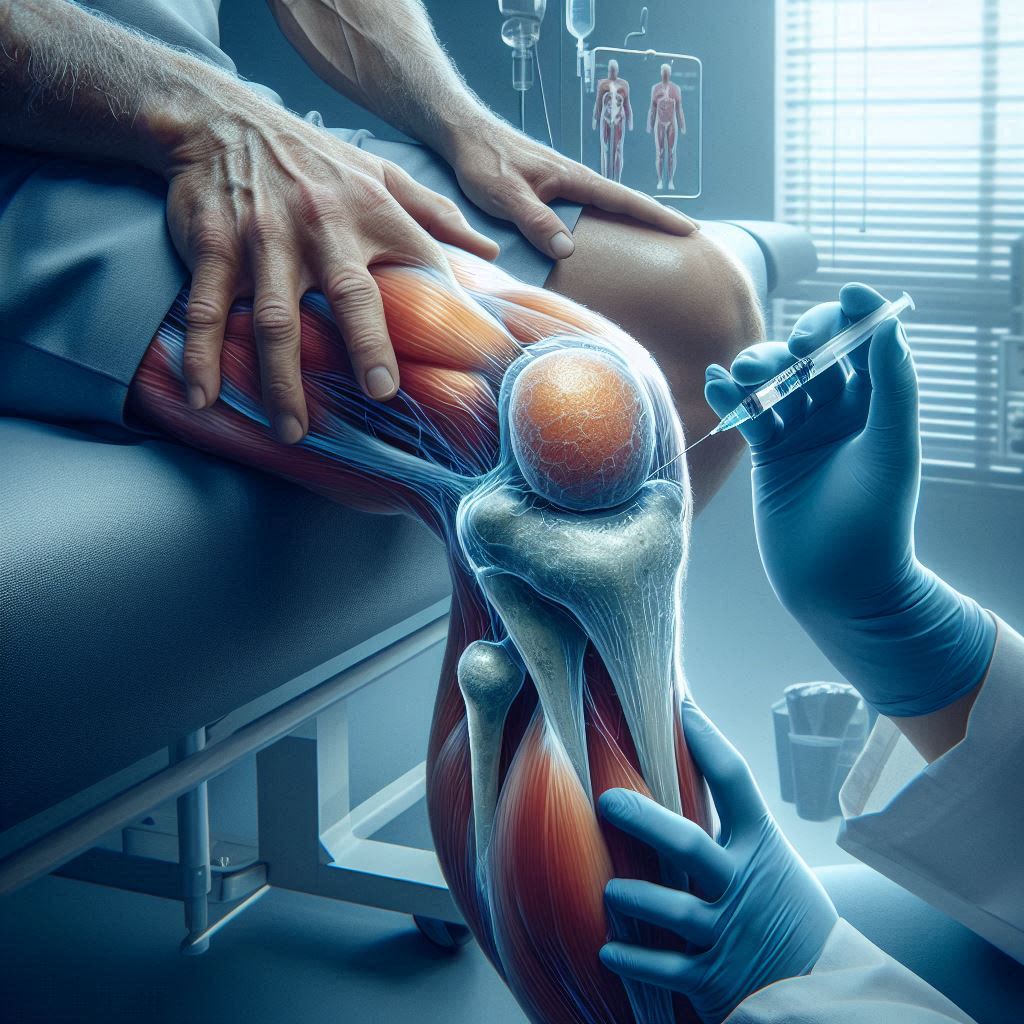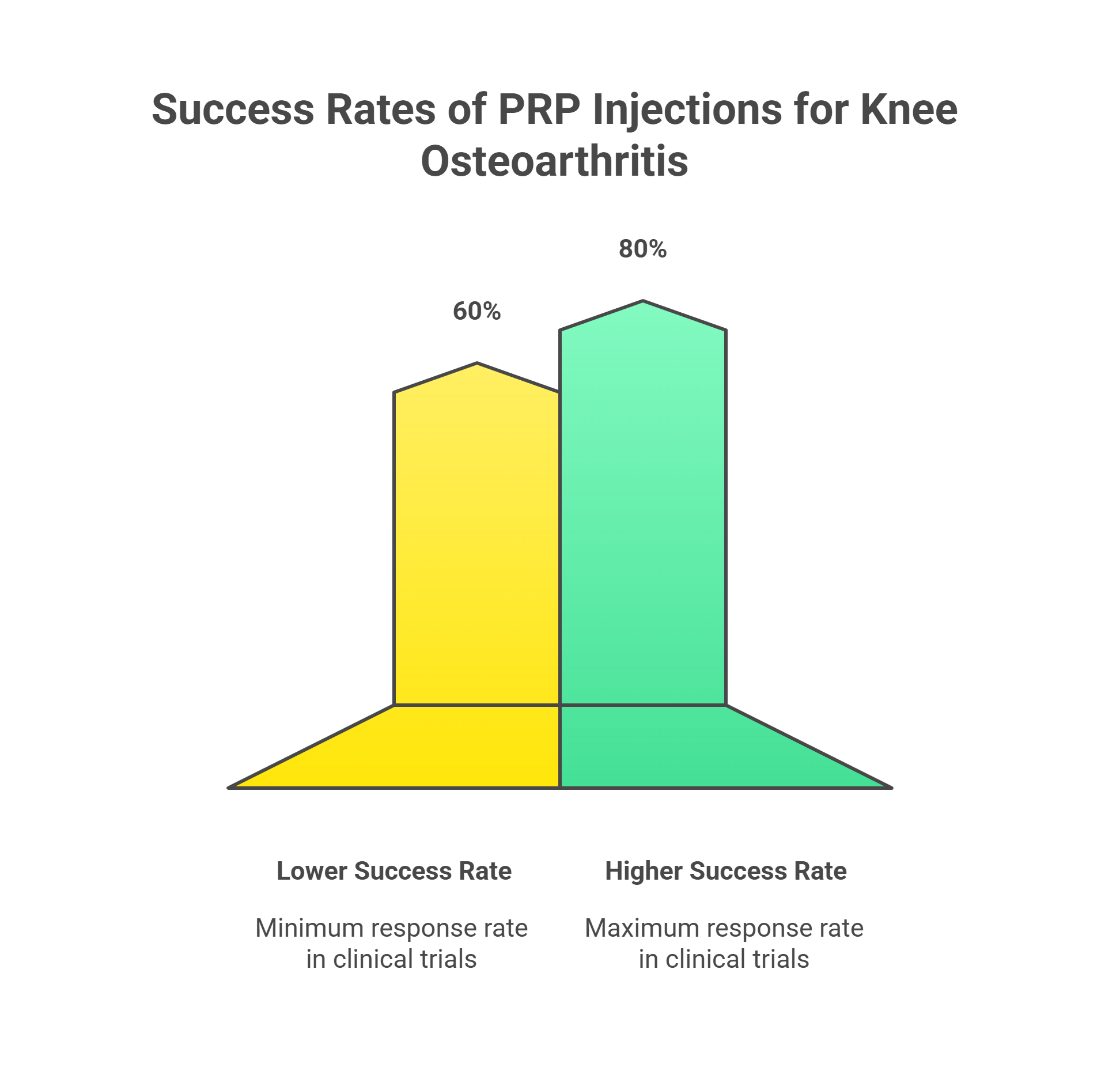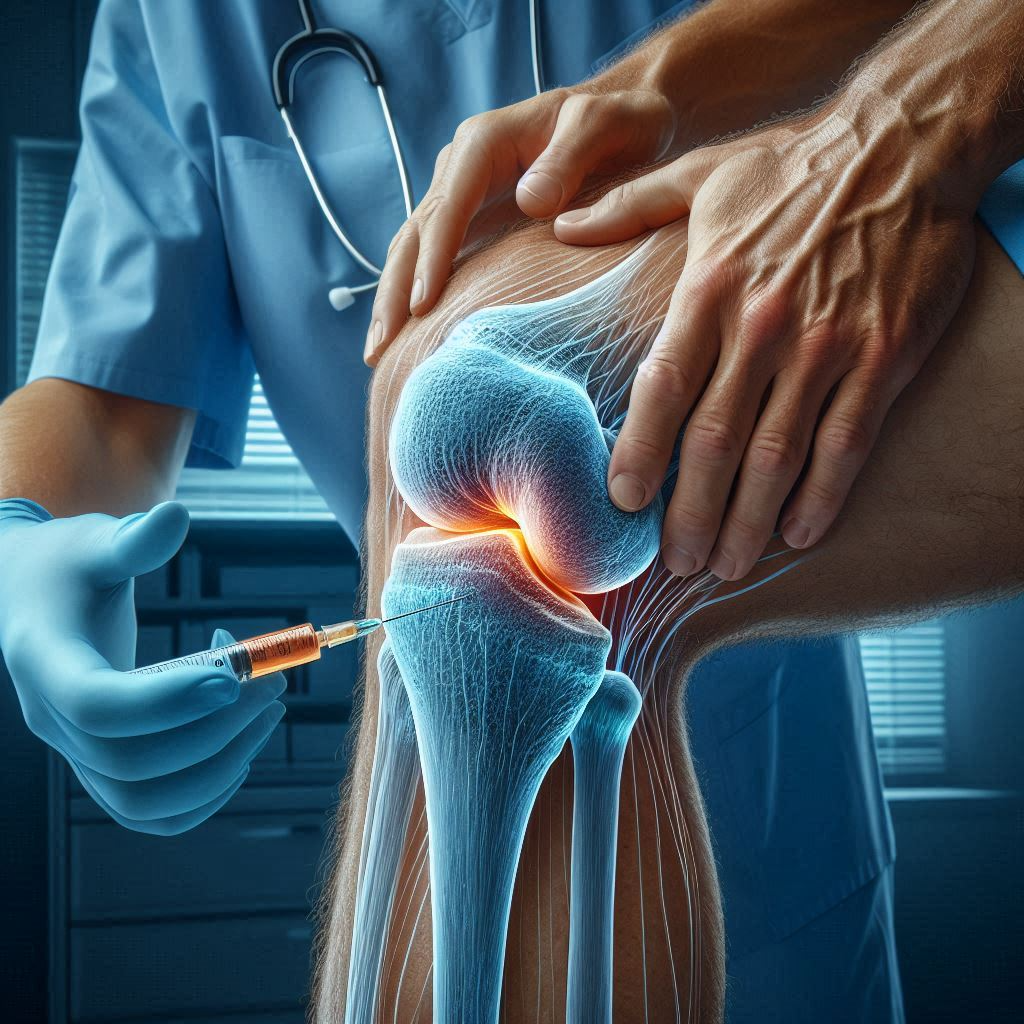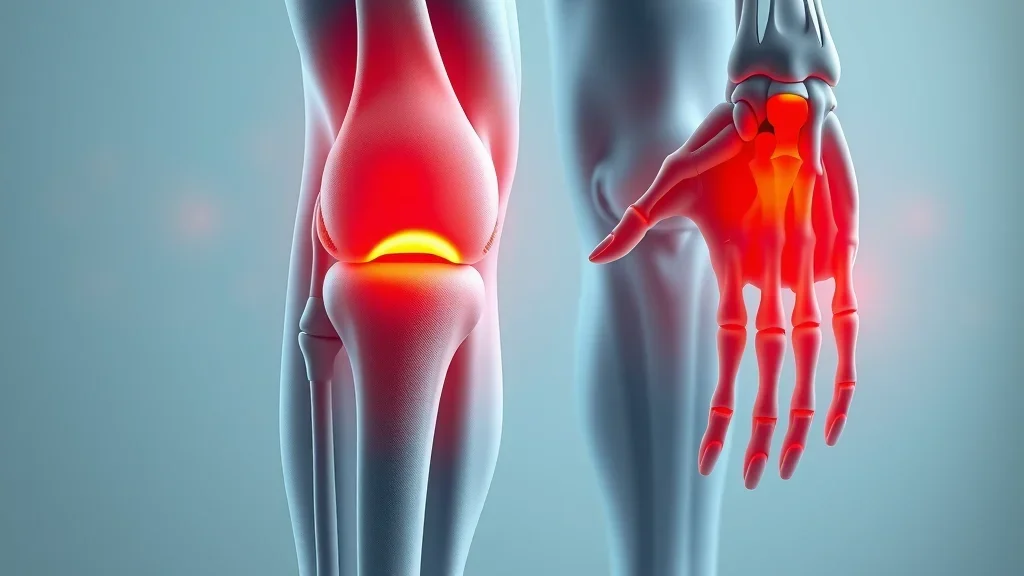
Did you know? Over 70% of adults over 50 with knee osteoarthritis report ongoing pain even after standard treatments like gel injections or surgery. For one 54-year-old man—perhaps like you—this means persistent discomfort after multiple therapies and questions about whether another $1,000 on a new treatment is worth the investment.
But platelet-rich plasma injections (PRP treatment) may offer new hope where other approaches have failed, providing a promising alternative for knee osteoarthritis relief. Read on to uncover the science, real outcomes, and costs, and to discover if PRP could finally offer you meaningful relief.
Unlocking the Potential of Platelet-Rich Plasma Injections: A New Hope for Knee Osteoarthritis
"Over 70% of adults over 50 with knee osteoarthritis report persistent pain after standard treatments. Could platelet-rich plasma injections be the game changer?"
For adults over 50 battling chronic knee osteoarthritis, each step can mean sharp pain, reduced mobility, and profound frustration—especially after failed treatments like hyaluronic acid gel shots or arthroscopic surgery. Many, including men in their fifties who have endured repeated procedures, find themselves still searching for genuine relief. So, what makes platelet-rich plasma injections different?

Unlike gel injections, PRP injections leverage your own body’s natural healing factors through rich plasma to target damaged tissue, reduce inflammation, and promote regeneration. Recent clinical evidence shows that PRP injections can lead to substantial pain relief and better mobility even when prior treatments—including physical therapy, NSAIDs, and gel shots—have produced disappointing results.
This comprehensive guide will walk you through how PRP injections and rich plasma therapy work, who benefits most, real-world outcomes for adults over 50, and honest discussions about costs and side effects. If you’re a candidate for PRP—especially if you’ve “tried everything” and are questioning whether to invest further—this article will give you practical answers and empower you to make an informed decision.
What You'll Learn About Platelet-Rich Plasma Injections
The science behind platelet-rich plasma injections
How PRP compares with hyaluronic acid "gel" shots
Pros, cons, costs, and expected results after a PRP injection
Unique benefits for adults 50+ with osteoarthritis
Risks and side effects of platelet-rich plasma injections
Understanding Platelet-Rich Plasma Injections: What They Are and How They Work

Defining Platelet-Rich Plasma Injections and Rich Plasma Therapy
Platelet-rich plasma injections—sometimes called rich plasma therapy or PRP therapy—harness a portion of your own blood to stimulate healing. In this procedure, a small blood sample is drawn and spun in a centrifuge, separating it into layers: red blood cells, white blood cells, and the golden-hued plasma. Plasma is the liquid foundation containing essential nutrients, while platelets (small cell fragments) are packed with growth factors that signal the body to repair damaged tissue. PRP therapy isolates and concentrates these platelets, then reinjects them directly into the injured area—such as a stiff or painful knee—where they can release growth factors to support the healing process naturally.
Unlike generic plasma injections, platelet-rich plasma injections focus explicitly on amplifying the therapeutic power of your own platelets through concentrated rich plasma injections. This custom-tailored approach is why many in orthopedics, sports medicine, and even hair restoration now recommend PRP treatments for their unique regenerative benefits.
For those interested in exploring additional natural approaches to managing arthritis pain, scientific research has highlighted the effectiveness of certain herbal remedies. You can discover three powerful herbs that actually reduce arthritis pain, according to science, which may complement your understanding of PRP and other treatment options: herbal strategies for arthritis relief.
The Science Behind PRP Injection: How Platelets Promote Healing
The real secret of PRP injection lies in its biological mechanism: platelets circulate in every drop of blood, ready to jump into action when the body is injured. When tissue is damaged—whether through trauma or osteoarthritis—the body naturally sends platelets to the site, where they form a blood clot to stop bleeding and release an array of growth factors to signal local repair and regrowth of blood cells and structures. By isolating and concentrating platelets, PRP therapy delivers a powerful dose of these growth factors right where chronic inflammation or damage lingers.
Peer-reviewed studies show that PRP injections can reduce pain, improve joint function, and may even slow degeneration in arthritic knees—especially in patients over 50, who typically have slower natural healing. The growth factors released by platelets—such as PDGF (platelet-derived growth factor) and TGF-beta (transforming growth factor)—activate your body’s own healing process, stimulating new tissue formation and reducing the chronic inflammation that causes persistent pain.
“Many of our patients with knee OA report from 6 to 12 months of pain relief after treatment with PRP. We usually see a 60% to 70% chance of success, with success defined as at least a 50% improvement in pain and function for 6 to 12 months after the injection.” - Mayo Clinic, Rochester
How Plasma Injections Are Prepared and Administered
Preparing and receiving plasma injections follows a straightforward but highly specialized process. It begins with drawing a small blood sample—usually from your arm—and placing it in a centrifuge. In just 10-15 minutes, this spinning device separates the red blood cells from the lighter, platelet-rich plasma layer. A trained medical professional collects the concentrated PRP, sometimes under ultrasound guidance to ensure precision, and injects it directly into the painful knee or treatment site.
This entire prp treatment usually takes under an hour and is performed at an outpatient clinic. No hospital stay or major recovery is required; you can typically walk out the same day. Because the injection uses your own blood, the risk of rejection or allergic reaction is extremely low, making it a suitable option for many older adults—especially those who have failed to find relief from other gel injections or surgeries.
Platelet-Rich Plasma Injections vs. Hyaluronic Acid Gel Injections: A Direct Comparison
Comparison of Platelet-Rich Plasma Injections and Gel Injections
Feature |
Platelet-Rich Plasma Injections (PRP) |
Hyaluronic Acid Gel Injections |
|---|---|---|
Efficacy (in adults 50+ with osteoarthritis) |
Significant pain reduction and improved mobility in 60-80% of patients; benefits often last 6-12 months |
Modest, short-lived symptom relief; many see little to no benefit after 3-6 months |
Cost |
$500–$1,500 per treatment (often not covered by insurance) |
$400–$1,200 per treatment (often covered by insurance) |
Longevity of Results |
6–12 months (sometimes longer in mild/moderate osteoarthritis) |
3–6 months (rarely longer) |
Insurance Coverage |
No, considered experimental in most cases |
Yes, often covered for osteoarthritis |
Pain Relief Onset |
Within 2–6 weeks after injection |
Usually within a week, but benefits often fade quickly |
Safety Profile |
Generally excellent; mild and brief side effects in most patients |
Generally safe, but rare allergic reaction possible |
Who Can Benefit Most from Platelet-Rich Plasma Injections?
Ideal Candidates: Adults Over 50 with Osteoarthritis

Adults aged 50 and up—especially those who’ve undergone arthroscopic surgery, physical therapy, NSAID regimens, or multiple rounds of gel injections (hyaluronic acid)—are often ideal candidates for platelet-rich plasma injections. Research indicates these individuals tend to experience the greatest improvements in pain and mobility following PRP, even when prior therapies have failed. In fact, for a 54-year-old male with persistent osteoarthritis in both knees and disappointing results after three gel injections, emerging data suggests PRP could help “turn the tide” after other strategies have been exhausted. Or could it?
“Platelet‑rich plasma can be an excellent option for someone who wants to delay or avoid invasive procedures like knee replacement, and results can last for years.” - Dr. Patrick Siegele, Physiatrist at Gaylord Specialty Healthcare
Doctors frequently recommend PRP for those with moderate, but not end-stage, joint degeneration; meaning, if you're still reasonably active but knee pain interferes with work, walking, or sleep, you may be the right candidate for PRP therapy. It’s vital, however, to discuss your medical history and treatment timeline with an experienced provider to ensure platelet-rich plasma injections match your health goals and expectations.
Platelet-Rich Plasma Injections for Hair Loss and Other Conditions

PRP injections aren’t just for aching knees—they’re increasingly popular for regenerating hair loss, especially effective in treating male pattern baldness and female pattern hair thinning. By delivering growth factors directly into the scalp, PRP can stimulate dormant hair follicles and slow or potentially reverse pattern baldness. Clinical research supports consistent improvements in hair density and thickness over a series of treatments, with minimal risk and downtime.
Beyond hair loss and osteoarthritis, plasma injections are also gaining traction in sports medicine for chronic tendonitis, tennis elbow, and recovery from certain ligament or muscle injuries. Whether you’re an athlete, a weekend warrior, or simply someone seeking natural healing after years of wear and tear, rich plasma therapy holds a diversified promise.
PRP Injections After Prior Treatments: Who Sees the Best Outcomes?
Those who have “failed” traditional options—such as NSAIDs, corticosteroid shots, gel injections, or even arthroscopic surgery—often express skepticism about new therapies. Yet, studies indicate that adults over 50 experiencing chronic knee pain are among the top responders to PRP when standard interventions have failed.
*Notably, patients with mild-to-moderate cartilage loss—not bone-on-bone arthritis—show the most remarkable improvement, with reductions in pain after just two to three PRP injections.
Additionally, individuals who maintain healthy lifestyles and aren’t on blood-thinning medication (or who follow instructions to stop taking them before PRP, as advised by their doctor) tend to have even better results and fewer side effects from rich plasma injections. Whether PRP works for prior non-responders appears to hinge on both the severity of the joint deterioration and the expertise of the clinician administering the therapy.
Clinical Evidence and Real-World Results: Do Platelet-Rich Plasma Injections Work After Other Knee Treatments Fail?
"A 2019 meta-analysis found that adults over 50 with knee osteoarthritis experienced significant pain reduction and improved mobility after three rounds of platelet-rich plasma injections."
Research Findings: Success Rates and Durability in Platelet-Rich Plasma Injections
Recent research, including a pivotal 2019 meta-analysis, found that three rounds of platelet-rich plasma injections significantly reduced knee pain and improved physical function in adults over 50. Clinical trials report response rates for PRP in knee osteoarthritis between 60% and 80%, with most patients enjoying several months—sometimes up to a year—of improved comfort and mobility. This holds true even in those who have had minimal gains from physical therapy or gel shots.

Specifically, adults with moderate joint deterioration (not full joint collapse) seem to enjoy the best results. In contrast, those with advanced (“bone-on-bone”) arthritis might see less dramatic improvement, though some still report less pain and greater mobility.
Longitudinal studies reveal that the benefits of PRP can outlast those of hyaluronic acid gel injections, with sustained relief beyond six months reported for many. These findings are especially reassuring for adults over 50, struggling with the decision to reinvest in another therapy.
Patient Stories: Experiences from Older Adults with PRP Injection
Many older adults describe PRP as their "last hope" after disappointment with surgery and gel injections. Take, for example, a 59-year-old male who suffered through years of persistent shoulder pain, despite multiple rounds of hyaluronic acid shots and surgery. “PRP wasn’t instant, but by about week six, I noticed I wasn’t wincing as much. Ultimately, my pain dropped from a 6-7 out of 10 to about a 2-3. I haven’t felt this active in years,” he shares.
Other patients echo these experiences, noting that while PRP does not “cure” osteoarthritis, it restores a level of function and quality of life they considered lost. The overwhelming majority describe side effects as very mild—brief knee soreness or swelling that resolves within days—and many are grateful for the second chance at better mobility, even if results aren’t permanent.
Risks, Side Effects, and Downsides of Platelet-Rich Plasma Injections
Short-term Side Effects Reported in PRP Injections
Most patients tolerate platelet-rich plasma injections extremely well, but like any procedure, there are short-term side effects such as mild swelling or soreness to be aware of. Within hours to days after injection, you might experience mild swelling, redness, or soreness at the site—similar to what’s seen after other plasma injections or arthritis shots. This typically eases with rest, ice, and over-the-counter pain relievers. Importantly, since PRP uses your own blood, the risk of infection or allergic reaction is much lower than with other orthopedic injections.
You may notice temporary stiffness or a feeling of pressure in the joint. Medical guidelines usually recommend limiting strenuous activity for a few days to allow the healing process to begin. In less than 5% of cases, more pronounced discomfort or swelling may occur, but this rarely lasts longer than a week. Your orthopedist or PRP specialist will provide customized aftercare instructions to minimize these effects and maximize the benefit of your prp injection.
Potential Long-term Risks of Plasma and Rich Plasma Injections

Long-term risks from rich plasma injections remain very rare according to available studies. Since the injection is autologous (using your own tissue), there’s minimal likelihood of chronic complications, blood clots, or lasting joint irritation. Rarely, if PRP is injected into a joint already severely degenerated (“bone on bone”), relief may be limited; some patients may experience persistent pain with little improvement—though this is uncommon in those with mild-to-moderate osteoarthritis.
Doctors emphasize that outcomes are best when an experienced provider prepares and delivers the rich plasma injection with proper sterile technique. There are no documented cases of serious infection or immune reaction specific to PRP therapy. If you have any concerns—especially if you’re immunocompromised or have a history of unusual reactions—it’s critical to discuss these before proceeding. Overall, the overwhelmingly positive risk-to-benefit ratio is a major reason why older adults are increasingly choosing plasma injections over repeated steroid or gel therapies.
What to Expect During and After a Platelet-Rich Plasma Injection Appointment
Step-by-Step Guide to the PRP Injection Process
Your PRP injection visit generally starts with a review of your medical history—this is where you’ll confirm prior treatments, surgeries, allergies, and current medications, including whether you need to stop taking blood thinners before your plasma injection. Next, a small amount of blood is drawn from your arm. This blood is then centrifuged to separate the platelet-rich plasma from other blood components. The entire separation process takes about 15 minutes.
After preparing the PRP, your physician will use either anatomical landmarks or ultrasound to identify the precise injection site, ensuring the PRP is delivered directly to the area of greatest joint damage or inflammation. The injection may cause brief discomfort, similar to a vaccination. Most appointments are completed within an hour, from check-in to discharge. You’ll receive aftercare instructions and can usually resume gentle activity that same day, with more strenuous exercise delayed for several days.
Recovery Timeline and Aftercare with Plasma Injections
In the first 24–48 hours after a plasma injection, you might notice mild swelling, increased warmth, or tenderness near your knee. Applying ice or cold packs, keeping the joint elevated, and avoiding high-impact activity can ease these symptoms. Most patients find discomfort peaks within the first two days and rapidly tapers off.
By the end of the first week, you should be able to return to low-impact exercise, such as walking or stationary cycling, unless your doctor instructs otherwise. Physical therapy is sometimes recommended to maximize results. Major improvement in pain and function typically appears 2–6 weeks after the last rich plasma injection. Your provider will monitor your progress, and some patients receive more than one injection, spaced several weeks apart, for optimal benefit.
How Soon Will You Feel Relief After Platelet-Rich Plasma Injections?
Unlike steroid shots, which may offer immediate relief, the benefits of platelet-rich plasma injections and rich plasma treatments build gradually over several weeks. Most people notice significant drops in pain and improved joint mobility within 2–6 weeks. The most dramatic improvements are usually reported after the second or third PRP injection if a multi-visit plan is prescribed.
By about two to three months post-injection, a majority of patients—especially those in the 50+ age group with moderate osteoarthritis—report their pain scores dropping by half or more, and activities like walking or climbing stairs becoming much easier. About 60–80% say results last at least six months, far outweighing brief relief provided by steroid or gel shots.
Cost of Platelet-Rich Plasma Injections: Is It Worth the Investment?

Typical Price Range and Insurance Issues
For most adults in the United States, a single PRP injection or rich plasma injection costs between $500 and $1,500, often requiring out-of-pocket payment due to limited insurance coverage. Unlike hyaluronic acid gel injections—often covered by insurance when used for osteoarthritis—PRP is still considered experimental by many insurance providers, leaving patients to pay out of pocket.
If you’ve had $1,200+ worth of gel injections with little or no improvement, the prospect of paying a similar amount for PRP may make you feel skeptical. However, unlike gel injections, real-world data and clinical trials suggest a much longer-lasting and more significant benefit from PRP in appropriate cases. It’s important to discuss pricing, package discounts (for multiple injections), and your expected number of treatments with your provider before starting.
Is the $1,000+ Cost of PRP Injection Worth It vs. Other Knee Injection Treatments?
For older adults who have already spent time and money on failed treatments, the question of “value” is central. Numerous studies show that, compared to traditional gel or steroid shots, platelet-rich plasma injections provide better and longer relief in most patients over 50. While $1,000 is a significant upfront investment, the potential for months of pain relief, improved mobility, and reduced reliance on medications or surgical interventions means many consider it money well spent—especially if prior insurance-covered therapies did not deliver meaningful results.
Before proceeding, ask your provider about your personal likelihood of success, potential package savings, and options for financing. Many clinics offer honest assessments, highlighting which patients stand to benefit and which may not, helping ensure your investment is as informed as possible.

People Also Ask About Platelet-Rich Plasma Injections
What does a platelet-rich plasma injection do?
A platelet-rich plasma injection delivers a high concentration of platelets and their associated growth factors directly to damaged tissue. This accelerates the natural healing process, promotes tissue regeneration, and reduces chronic inflammation. Most commonly used in knees, tendons, and for hair loss, PRP therapy can help improve pain, function, and even stimulate new cell growth.
What are the risks of platelet-rich plasma injections?
The risks of PRP injections are typically minor, including temporary pain, swelling, redness, or joint stiffness at the injection site. Because the treatment uses your own blood, risk of infection or allergic reaction is minimal. Rarely, those with advanced arthritis may not experience notable improvement, and there is a small chance of persistent discomfort or joint irritation.
How much does a PRP plasma injection cost?
The average cost for a platelet-rich plasma injection ranges from $500 to $1,500 per treatment in the US. Most insurance plans do not cover PRP for osteoarthritis or orthopedic use, as it’s still categorized as investigational in many guidelines. Pricing can vary depending on clinic, city, and whether multiple injections are recommended.
How long do platelet-rich plasma injections last?
Relief from PRP therapy in knee osteoarthritis can last 6–12 months (sometimes longer in mild cases), according to meta-analyses and patient registries. The duration depends on the severity of your joint degeneration, overall health, and activity level. Many patients choose to repeat the treatment every 9–12 months for sustained benefit.
Common Questions About Platelet-Rich Plasma Injections
How many platelet-rich plasma injections are needed for results?
Most patients benefit from 2–3 injections, spaced several weeks apart, though some experience improvement after a single treatment.Does PRP injection hurt?
Discomfort is usually mild—similar to a flu shot or blood draw. Soreness after the injection is typically brief and manageable with routine self-care.Can I resume normal activities after a plasma injection?
You can walk and perform light tasks the same day, but high-impact activities should be postponed for a week or until your doctor approves.Are there age limits for PRP injections?
There is no strict age limit, but adults over 50 with mild-to-moderate osteoarthritis and otherwise good health tend to have the best outcomes.
Key Takeaways: Platelet-Rich Plasma Injections for Adults Over 50
Platelet-rich plasma injections provide an innovative option when other knee therapies fail
Adults over 50 can see significant pain relief and improved mobility
Potential risks are mild and short-lived; benefits may justify the cost for many
Conclusion: Should You Choose Platelet-Rich Plasma Injections for Knee Osteoarthritis?
If you’re over 50, have stubborn knee osteoarthritis, and standard treatments have offered little relief, PRP may be worth the investment—even if insurance does not pay. Clinical evidence and patient stories show meaningful, lasting benefits with minimal risk.
If you’re seeking a deeper understanding of how different therapies and medications can impact your journey with joint pain or arthritis, it’s worth exploring the broader landscape of treatment options. For a comprehensive look at how various inflammatory arthritis medications work—and how to make empowered choices for your health—visit our in-depth guide on decoding inflammatory arthritis medications. Expanding your knowledge of both innovative and traditional approaches can help you and your family make the most informed decisions for long-term wellness and mobility.
Ready to Take the Next Step Toward Pain Relief?
Consult a board-certified orthopedic or sports medicine physician specializing in platelet-rich plasma injections, rich plasma treatments and gel injections to discuss your unique situation, expectations, and goals.
Platelet-Rich Plasma Injections Explained by Experts
Platelet-rich plasma (PRP) injections are gaining popularity for treating various conditions, including knee osteoarthritis, by utilizing a patient’s own blood components to promote healing. According to Johns Hopkins Medicine, PRP can support wound healing in trauma and joint injuries, and is also used in cosmetic procedures. (hopkinsmedicine.org)
The Cleveland Clinic notes that PRP injections may aid in improving symptoms and lead to faster wound healing, with effects potentially lasting six months to a year or longer. (my.clevelandclinic.org)
However, Harvard Health highlights that while PRP is used for various musculoskeletal issues, recent well-designed clinical trials have found it ineffective for certain conditions like knee osteoarthritis and Achilles tendinitis. (health.harvard.edu) Therefore, it’s essential to consult with your healthcare provider to determine if PRP therapy is appropriate for your specific situation.
 Add Row
Add Row  Add
Add 




Write A Comment